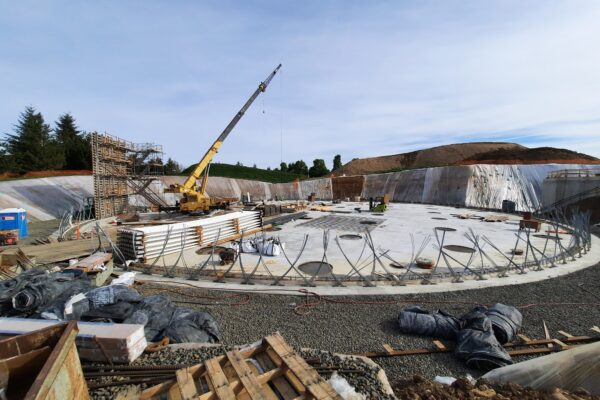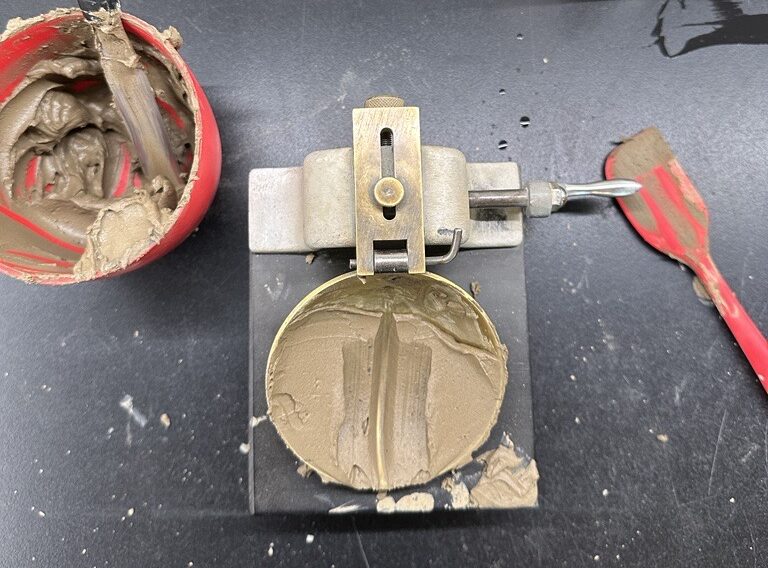
Lab Testing 101
Over the summer, the GRI Marketing and Production team participated in GRI Lab Testing 101 hosted by our in-house Lab Manager, Cathleen McMahon, PhD (Cathy). This workshop was a high-level overview of the many tests that GRI can perform in-house after collecting soil and/or rock samples at a project site. Cathy provided her expertise on grain size, hydrometer, and Atterberg testing. She also took the team through a tour of GRI’s specialty lab.
To kick off Lab Testing 101, the team was introduced to sieve analysis testing, which was demonstrated using the lab’s new Gilson Silent Sifter 2. Cathy led the team through the separation of larger gravel pieces down to fine sand in 7 to 10 minutes.
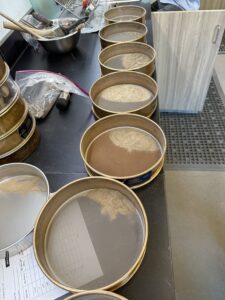
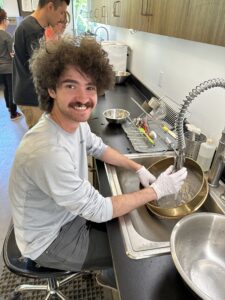

While the final sieve test results were being completed, Cathy introduced one of the more delicate instruments GRI used in-house, which is the hydrometer. The hydrometer test measures the amount of silt and clay within a given sample by analyzing suspended soils in sedimentation cylinders. To conduct this test, the sample is mixed with water while the time-sensitive data is recorded.
For the final test, the team got to get their hands dirty. They gathered around the lab tables to learn about soil plasticity indices through forming “worms” out of soil samples to perform an Atterberg test. To determine the plasticity of the soil samples, Cathy showed the team how water is added back into a soil sample to create the texture of cake frosting. Once the soil begins to feel like it is nearing the frosting texture, it is scooped and smoothed into a Casagrande liquid limit device to help determine the liquid limit (LL), plastic limit (PL), and the plasticity index (PI) of the soil sample. Ideally, the results of the Atterberg test determine the plasticity of the sample.
While some of the team worked on checking for the plasticity of their soil sample, others worked on their worm-rolling skills.


In addition to running the myriad of tests, Cathy provided insight on the preparation of samples using Shelby tubes to obtain undisturbed samples of materials. In this demonstration, the team evaluated the shaving down of a tube sample, retrieving a suitable soil sample, and creating a “puck.” These pucks are then analyzed to determine how the soil will behave.
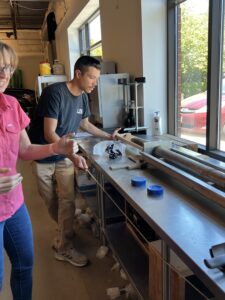
To conclude the Lab Testing 101 workshop, Cathy took the team into GRI’s specialty lab where they learned about the variety of specialty and advanced testing GRI performs in-house, including:
- Unconfined Compression
- Triaxial Testing
- Moisture Testing
- Proctor Tests
- Point Load Testing
- Cyclic Direct Simple Shear
For more information on GRI’s laboratory testing capabilities, please reach out to Cathy or Christina.


